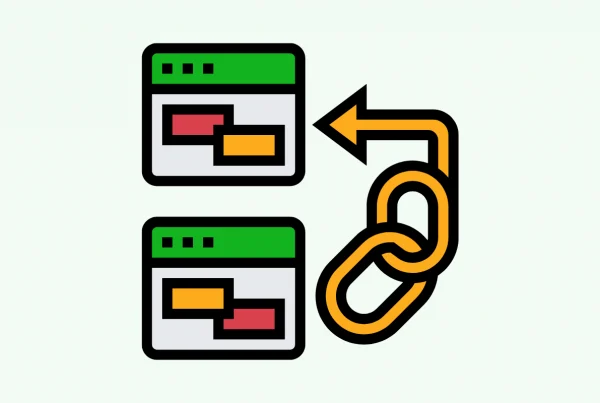Blog article
How to Structure Your Ecommerce Website for SEO
Estimated reading time: 6 minutes

The products on your ecommerce website might be amazing, but how good is your website structure when it comes to SEO? That’s the kicker right there.
A great strategy for your website structure is typically the difference between a complete mess of an ecommerce site and one that’s loved by customers and search engines.
Want to know the rules for having a solid website structure—and why it’s important for user experience and SEO?
Read on to learn simple and actionable advice for developing your site and skyrocketing SEO performance.
If your e-commerce website uses an SEO-optimized website structure, it will result in your users—and Google—“getting it” . . . and loving it. This will impact greatly on the success of your website in general, bringing:
- Better rankings
- Lower bounce rates
- Higher conversions
Your ecommerce website structure is dependent on a few things. Follow the guide below to ensure an optimal SEO website structure and experience a boost in reach and sales.
Your guide to structuring your ecommerce website for SEO
Now that you know why a solid structure is important, let’s look at how to get there.
Do in-depth keyword research
To develop great landing pages as well as generating fantastic content ideas, you can’t avoid keyword research.
Think about your business
If you’re just getting your website off the ground, it’s essential to collect, select, and then group all of your relevant keywords. Then, think about which words you’d use to best describe your business.
Not sure how to find relevant keywords for your website? Learn all about it here.
Get inspiration from your favorites
To get more ideas, you can list all your favorite websites and see how they’re using keywords to connect with their customers. They probably have a few tricks up their sleeve for attracting and engaging customers—they are your favorites, after all!
Pay attention to competitors
You also need to stay on top of what your competitors are doing. Who are they? What is their website structure like? How many sections does it include? Don’t forget to check out their keywords as well.
Write SEO optimized URLs
Once you have your keywords and phrases—and you’ve filtered out the ones that aren’t relevant to your business—you’ll need to think of some SEO optimized URLs for your main pages.
According to Google, you need to include:
- Readable words
- Hyphens rather than underscores
- Relevant keywords
- Short URLs
Connect your website’s pages
Internal linking is of incredible importance to achieving a powerful website structure and cannot be overlooked.

Start with your menu
This is the place that helps your audience navigate your pages and find all the information they might need.
For best results, you need to create a menu that’s based on customer queries or on the products or services you offer. Be careful about including too many links, though. We suggest keeping the number of links in the menu under 80 as too many can impact the page performance. This will also help when those search bots start crawling your site.
Watch the number of levels
Having levels of categories in your store helps your customers find what they need and teaches search engines about your website structure.
But don’t get carried away with levels. Too many can harm your website’s crawlability. As a result, fewer of your pages will be indexed.
This is partly contextual because some stores may need more detailed categories than others. Still, do your best to consolidate your levels as much as possible.
Make good use of breadcrumbs and footers
Using breadcrumb trails will help with navigation and allow users to understand where they’re situated on your website at any given time. Footers are useful for adding main links found in the top section of your navigation menu.
Don’t forget to add relevant footers such as:
- FAQ
- Privacy Policy
- Terms of Use
- Contacts
If you have many products on your eCommerce website, it would be ideal to also include a search tab as well as filter the main categories.
This not only organizes your content but also minimizes effort on behalf of the user. Having to dig for something typically results in your customer being frustrated and leaving your site, never to return again.
Don’t forget a sitemap
A sitemap is also essential, not only for users but also search crawlers. Insider tip: Google always indexes websites that have sitemaps faster than those that don’t. If that’s not a reason to have one, we don’t know what is.
Be mobile-first
If there’s one thing we know, it’s that an increasing number of customers are visiting eCommerce websites on their mobile devices. According to Statista, in the third quarter of 2020, it accounted for a whopping 50.81% of global traffic.
Picture this: Two friends are catching up for coffee, and one is telling the other about their recent buy. What does this product look like, and how much did it cost? It takes two seconds for the buyer to whip out their mobile phone, do a quick search, and find the item on your site—if it’s optimized for mobile phones, that is.
If not, then you’re definitely losing sales. To ensure you have great mobile-first content, think about factors such as visual content like images and videos, the time it takes to load, and the structure of your mobile-friendly site. It should be very similar to the desktop site to keep things simple for the user.
Improving your website structure for better SEO
When it comes to designing a website structure that has draws people in, it isn’t just about sections or links. You also need to consider things such as design and, most importantly, user experience.
Investing both time and resources in creating the best website structure is a crucial step in creating a successful website. Landing pages with on-point SEO are not easy to come by, but Verbolia makes SEO simple.
Request a demo today and see a transformation in your traffic.
About The Author
How can Verbolia help your e-commerce platform.


